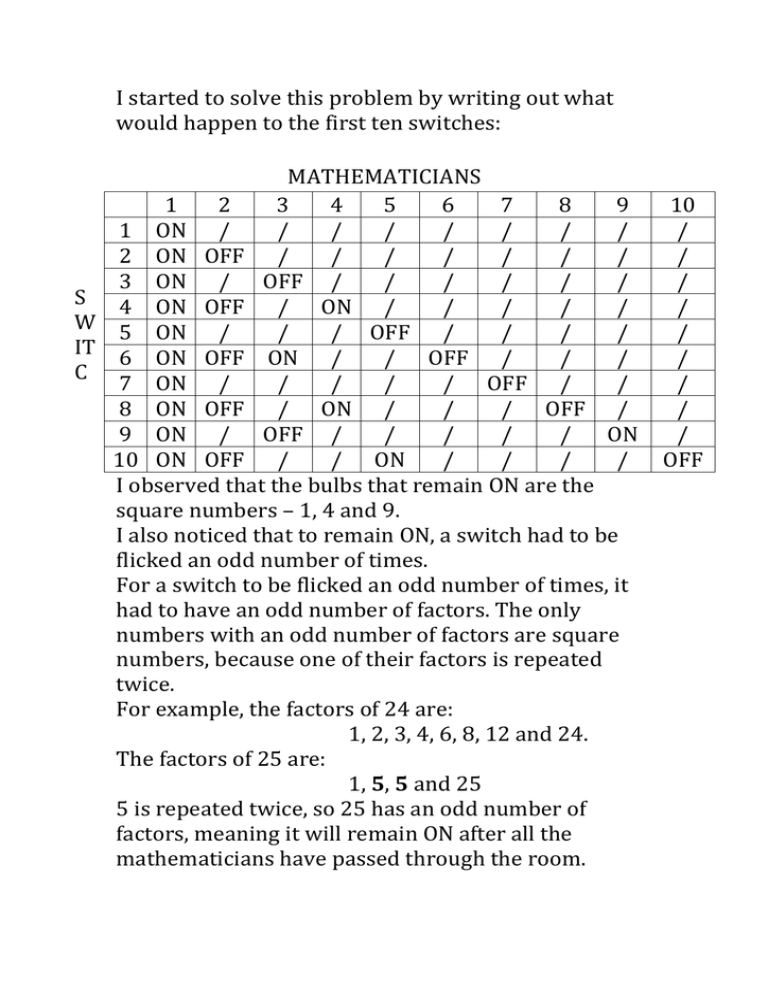Flipping Switches Solution
advertisement

I started to solve this problem by writing out what would happen to the first ten switches: S W IT C H ES MATHEMATICIANS 1 2 3 4 5 6 7 8 9 1 ON / / / / / / / / 2 ON OFF / / / / / / / 3 ON / OFF / / / / / / 4 ON OFF / ON / / / / / 5 ON / / / OFF / / / / 6 ON OFF ON / / OFF / / / 7 ON / / / / / OFF / / 8 ON OFF / ON / / / OFF / 9 ON / OFF / / / / / ON 10 ON OFF / / ON / / / / I observed that the bulbs that remain ON are the square numbers – 1, 4 and 9. I also noticed that to remain ON, a switch had to be flicked an odd number of times. For a switch to be flicked an odd number of times, it had to have an odd number of factors. The only numbers with an odd number of factors are square numbers, because one of their factors is repeated twice. For example, the factors of 24 are: 1, 2, 3, 4, 6, 8, 12 and 24. The factors of 25 are: 1, 5, 5 and 25 5 is repeated twice, so 25 has an odd number of factors, meaning it will remain ON after all the mathematicians have passed through the room. 10 / / / / / / / / / OFF

![ )] (](http://s2.studylib.net/store/data/010418727_1-2ddbdc186ff9d2c5fc7c7eee22be7791-300x300.png)

